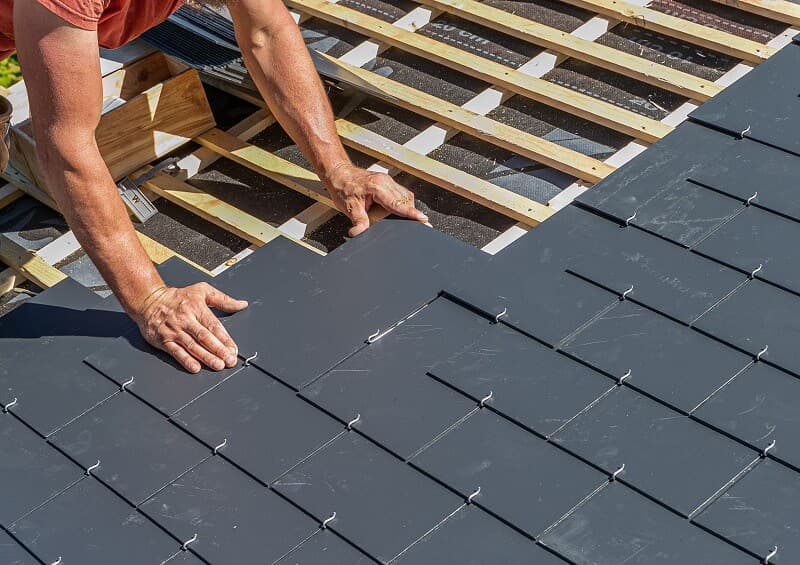A new roof is a significant investment in your home’s comfort, safety, and overall value. Proper preparation is essential to ensuring a smooth and successful residential roof installation. While the actual installation process is typically handled by roofing professionals, there are several steps homeowners can take to get their homes ready for this important project. In this blog, we’ll provide you with valuable tips on how to prepare your home for a residential roof installation.
1. Hire a Reputable Roofing Contractor
Before you start preparing your home, the first and most critical step is to hire a reputable roofing contractor. Conduct thorough research, check references, read reviews, and ensure the contractor is licensed, insured, and experienced. A reliable roofing company will guide you through the entire process, from choosing materials to completing the installation.
2. Understand the Scope of Work
Once you’ve selected a roofing contractor, have a detailed discussion about the scope of work. Understand what to expect during the installation, including the estimated duration, potential disruptions, and any specific requirements or preparations needed on your part.
3. Clear the Work Area
Before the installation begins, ensure that the area around your home is free of obstacles. Trim overhanging tree branches to prevent damage to the new roof and to provide easy access for the roofing crew. Move outdoor furniture, decorations, and vehicles away from the house to protect them from debris and potential damage.
4. Protect Fragile Items Inside
Roofing work can create vibrations and noise that may affect fragile items inside your home. It’s a good idea to secure or temporarily remove delicate items such as glassware, artwork, and electronics from walls and shelves. This precaution will help prevent potential damage from vibrations or falling debris.
5. Cover Attic Belongings
Dust and debris can filter into your attic during roof installation. To protect your belongings, cover them with plastic sheets or drop cloths. Additionally, it’s a good idea to inspect your attic for any existing leaks or damage and inform your roofing contractor of any issues that need addressing during the installation.
6. Communicate About Children and Pets
If you have children or pets, consider their safety during the roofing project. Let your contractor know about any specific concerns you have, such as keeping gates closed or ensuring that children and pets stay clear of the work area for their safety and the safety of the crew.
7. Create a Clear Pathway
To facilitate the roofing crew’s access to your roof, create a clear pathway from the driveway to the work area. Remove any obstacles that could hinder their movement, and ensure that gates and doors are unlocked to avoid delays.
8. Protect Landscaping
Your landscaping may be affected by the roofing project, particularly if your home has a steep roof pitch. To minimize damage, cover plants and shrubs with drop cloths or plastic sheeting. This will shield them from falling debris and protect your landscaping investment.
9. Secure Loose Items in the Attic
If your attic contains loose insulation, ductwork, or other items, secure them before the roofing installation begins. The vibrations from the work could dislodge these items, potentially causing damage or creating safety hazards.
10. Communicate About Satellite Dishes and Solar Panels
If you have satellite dishes or solar panels on your roof, inform your roofing contractor about them. These installations may need to be temporarily removed to allow for proper roof installation. Your roofing contractor can coordinate the removal and reinstallation with the appropriate professionals.
11. Prepare for Noise and Disruption
Roofing installation can be noisy and disruptive, especially during the removal of the old roof. Be prepared for the sound of tools, the movement of workers, and the inevitable commotion that comes with a construction project. Inform your neighbors in advance to manage expectations and maintain good relations.
12. Plan for Waste Disposal
Ask your roofing contractor about the disposal of old roofing materials. Inquire whether they will provide a dumpster or container for waste removal. Proper disposal is essential for both environmental and safety reasons.
In conclusion, preparing your home for a residential roof installation is essential for a successful and hassle-free project. While you may not be responsible for the actual roofing work, these preparatory steps ensure that your property, belongings, and loved ones are safe and well-protected during the installation process. By collaborating closely with your roofing contractor, you can create a smooth and efficient experience that results in a new roof that enhances the comfort, safety, and value of your home.
Spring Roofing https://www.springtexasroofers.com/

